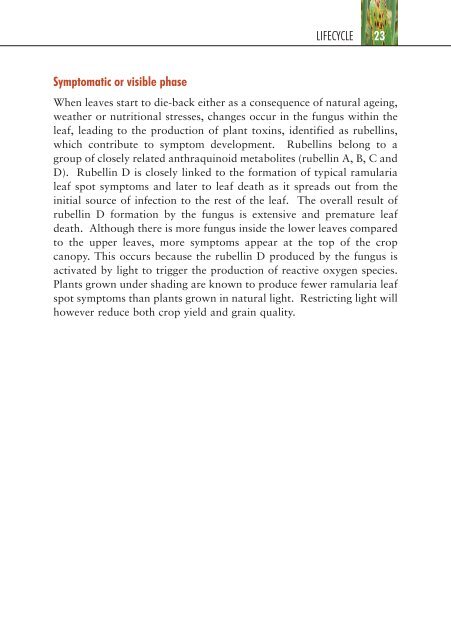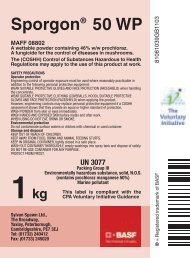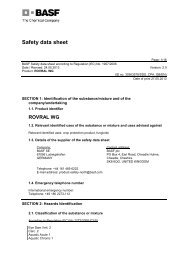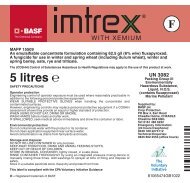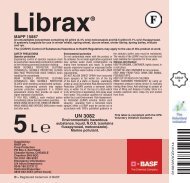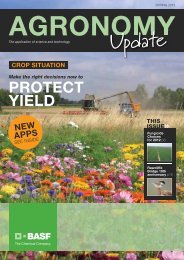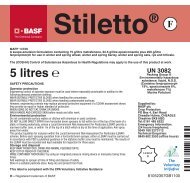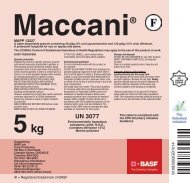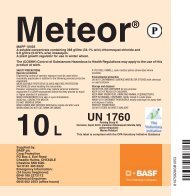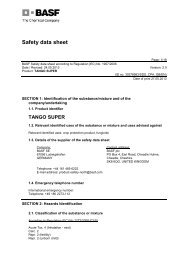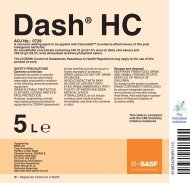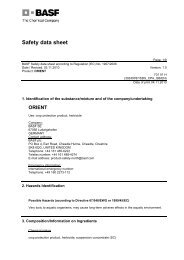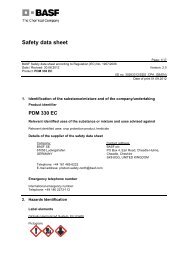a guide to the recognition and understanding of ramularia and other ...
a guide to the recognition and understanding of ramularia and other ...
a guide to the recognition and understanding of ramularia and other ...
You also want an ePaper? Increase the reach of your titles
YUMPU automatically turns print PDFs into web optimized ePapers that Google loves.
Symp<strong>to</strong>matic or visible phase<br />
LIFECYCLE 23<br />
When leaves start <strong>to</strong> die-back ei<strong>the</strong>r as a consequence <strong>of</strong> natural ageing,<br />
wea<strong>the</strong>r or nutritional stresses, changes occur in <strong>the</strong> fungus within <strong>the</strong><br />
leaf, leading <strong>to</strong> <strong>the</strong> production <strong>of</strong> plant <strong>to</strong>xins, identified as rubellins,<br />
which contribute <strong>to</strong> symp<strong>to</strong>m development. Rubellins belong <strong>to</strong> a<br />
group <strong>of</strong> closely related anthraquinoid metabolites (rubellin A, B, C <strong>and</strong><br />
D). Rubellin D is closely linked <strong>to</strong> <strong>the</strong> formation <strong>of</strong> typical <strong>ramularia</strong><br />
leaf spot symp<strong>to</strong>ms <strong>and</strong> later <strong>to</strong> leaf death as it spreads out from <strong>the</strong><br />
initial source <strong>of</strong> infection <strong>to</strong> <strong>the</strong> rest <strong>of</strong> <strong>the</strong> leaf. The overall result <strong>of</strong><br />
rubellin D formation by <strong>the</strong> fungus is extensive <strong>and</strong> premature leaf<br />
death. Although <strong>the</strong>re is more fungus inside <strong>the</strong> lower leaves compared<br />
<strong>to</strong> <strong>the</strong> upper leaves, more symp<strong>to</strong>ms appear at <strong>the</strong> <strong>to</strong>p <strong>of</strong> <strong>the</strong> crop<br />
canopy. This occurs because <strong>the</strong> rubellin D produced by <strong>the</strong> fungus is<br />
activated by light <strong>to</strong> trigger <strong>the</strong> production <strong>of</strong> reactive oxygen species.<br />
Plants grown under shading are known <strong>to</strong> produce fewer <strong>ramularia</strong> leaf<br />
spot symp<strong>to</strong>ms than plants grown in natural light. Restricting light will<br />
however reduce both crop yield <strong>and</strong> grain quality.


